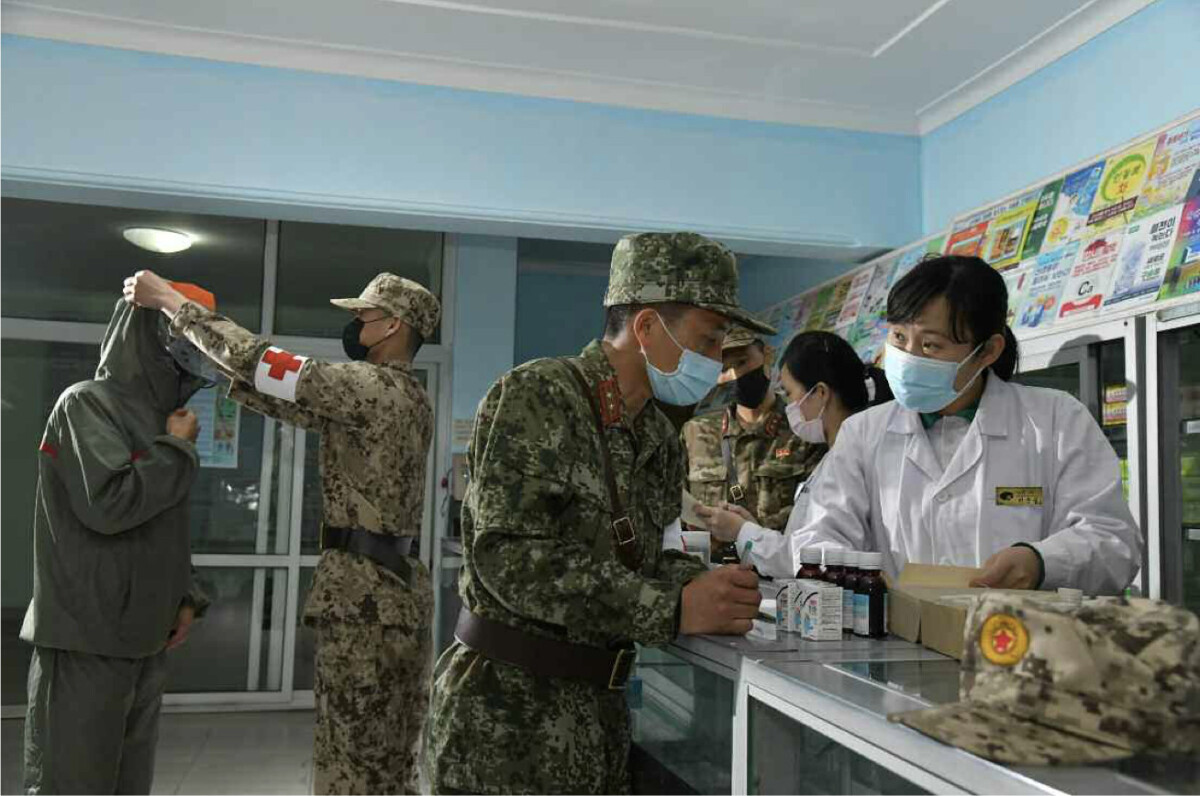The end of free medical care: My COVID experience in North Korea (Part 5)

During the pandemic, we would often see soldiers on TV and in movies in protective suits handing out medicine and checking people’s temperatures during the pandemic.
At the time, I didn’t believe them. I wondered if anything like that really happened. I thought it was propaganda. Given the nature of North Korean cinema, it was a fair assumption.
In truth, such scenes were real, but they only occurred in Pyongyang. Outside the capital, it was a completely different world. There we were left in total darkness.
One of my cousins lived in Pyongyang. She told me that when she was sick, soldiers came to give her medicine, check her temperature, and carry out strict quarantine measures. That made me realize those film scenes weren’t exactly fictional.
But in the provinces, there were no such benefits. As more and more people fell sick and died, the government began distributing medicine. Of course, we were told, “The General has released the state’s medicine for the people.”
Actually, I heard that the drugs had come from the UN. In fact, if you looked closely, the medicine carried UN markings. Once distribution began, supplies increased. Medicine that had cost 5,000 won at the official price could now be bought for 350 won. But individuals couldn’t buy it directly. You had to go through the hospital.
The neighborhood unit head would report to the hospital that someone in their unit was sick and a nurse would come to check the patient’s fever. If the nurse judged it to be high, they gave their signed approval. Only then could a patient receive the medicine. If the nurse judged the fever not serious enough, you got nothing. Without that confirmation, hospitals wouldn’t release any drugs.
Because medicine was scarce, even healthy people wanted to stock up out of fear they might catch COVID-19. That was why the nurse’s verification step was strictly enforced. Later, people even joked that those who got sick later were the lucky ones. This was because if you were sick the medicine was cheaper. Some even joked “Getting sick late actually pays off.”
North Korea claims that hospitals provide free treatment, but in reality, without money you can’t do anything. In the past, hospitals displayed the slogan “Free Treatment,” with posters and propaganda art showing the system’s benevolence. But now, price lists are posted on hospital walls.
After COVID, these price lists became common. They even included comparison charts of medical costs between the U.S. and North Korea. For example, it claimed an appendectomy in the U.S. cost $500 (4.5 million won), while in North Korea it was just 200,000 won.
Looking at that chart, I thought, “Wow, America is really expensive,” and believed North Korea was a good country because treatment was supposedly affordable. At the time, I genuinely thought that way. They even wrote that extracting a tooth in the U.S. cost $1,000–2,000, which shocked me.
But after coming to South Korea, I learned that prices differ from country to country and realized how little I had understood back then. In North Korea, with almost no access to outside information, when you see such propaganda you can’t help but believe our country must be the best place to live.
Even though I thought I was accessing some outside information, I still found myself thinking, “Why is that country so expensive?” whenever I saw propaganda like that.
I also had a real experience at a hospital. My younger sibling needed leg surgery, but there was no anesthesia. He was just a child, yet they cut into his flesh without numbing him. My mother and I were helpless. As he writhed in pain, I couldn’t help but cry along with him. Without anesthesia, there was no way to ease his suffering.
North Korea has many capable doctors, but without medicine or equipment, they are powerless to help. Even syringes are reused. The first few times might be okay, but by the fourth or fifth use, the needle becomes dull, making injections painful and difficult. At that point, you couldn’t tell if the pain came from the injection or from the illness itself.
There were also rumors about vaccines. The government claimed some people had been vaccinated, but in reality, it was said that only officials or people traveling abroad received them secretly. I thought everyone had been vaccinated as I had, but that turned out to not be true. Even within the same region, some people were vaccinated while others were not.
I personally received two shots, in April and October of 2021. At the time, I was told it was according to the designated schedule. Later, I learned that only residents of frontline areas like mine were vaccinated. People living just 30 kilometers away said they never received any vaccines.
- Air Force marks 80th anniversary… Kim stresses airspace sovereignty and nuclear deterrence - December 6, 2025
- Kim highlights power plant construction…Ignores people’s suffering - November 25, 2025
- How our childhood gifts from the benevolent leader actually came from the sweat of our parents - November 24, 2025

